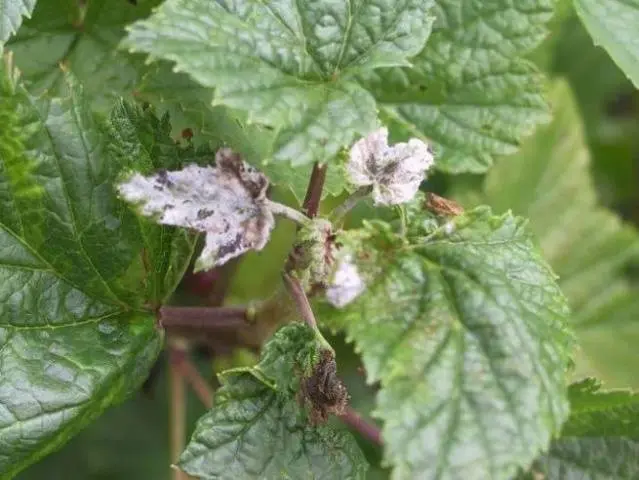Contents
Berry season is over. The entire crop is securely hidden in jars. For gardeners, the currant care period does not end. There comes a stage of work on which the future harvest depends. Processing currants in the fall involves the following types of horticultural activities: pruning a currant bush, treating it from insect pests and diseases, fertilizing to increase the plant’s immunity.

The currant has a number of specific diseases, it can be attacked by pests. During flowering and ripening of berries, it is impossible to treat currants with special preparations. The most convenient time for processing is after harvest. In order for the currant bushes to remain healthy throughout the growing season, a number of actions should be taken in the fall in advance:
- The shrub is sprayed with special chemicals aimed at protecting plants;
- Carry out loosening and tillage under blackcurrant bushes;
- Bring in top dressing;
- Rejuvenate bushes by conducting autumn pruning of currants.
The activities will be preventive in nature.
Top dressing and fertilization
If the plant is strong and healthy, then it is not afraid of diseases and attacks of insect pests. The introduction of mineral fertilizers and timely top dressing increase the immunity of blackcurrant.
After harvesting, the plant needs phosphorus and potassium. A sufficient amount of absorbed microelements makes blackcurrant resistant to upcoming frosts, and contributes to the growth of root mass.
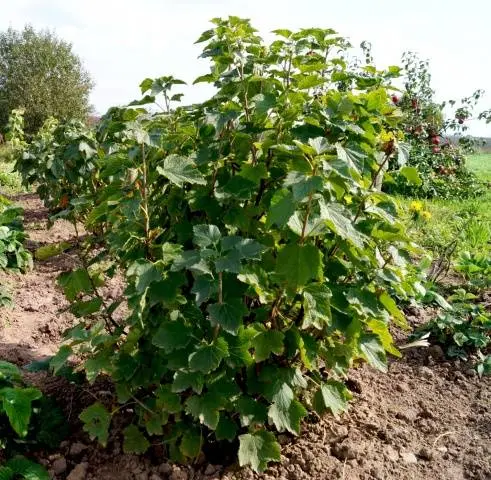
Potassium sulfate or potassium sulfate and double superphosphate are required to be added 1 tbsp. l., scattering in diameter around the currant bush, and then spill it well with water, taking at least 10 liters. Or dissolve the fertilizer in a bucket of water and pour over the finished solution.
No less useful will be the introduction of wood ash, which is rich in a variety of trace elements. For feeding currants take 1 tbsp. and scattered around the bush. The introduction of ash is best combined with digging the soil under the bush. You can prepare an ash solution if the weather is too dry.
Gardeners who are fundamentally against the application of mineral fertilizers can overlay currant bushes with compost or dig the soil along with it. During the winter, organic compounds will turn into a form convenient for absorption by currant roots. The produced top dressing with organic matter will be in demand by the plant in full in the spring to build up green mass.
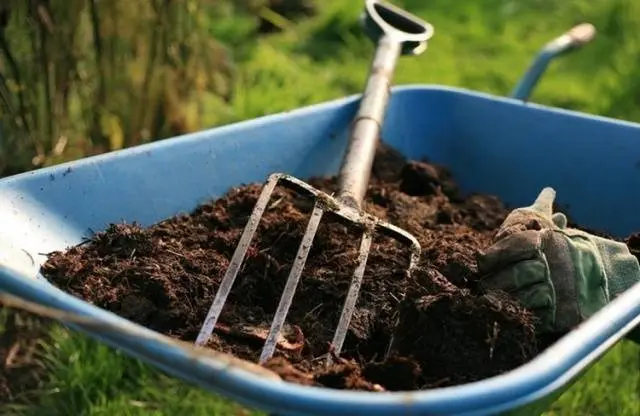
If the planting of the currant bush was done correctly with all the necessary fertilizers placed in the planting pit, then for 2 years additional feeding will not be required. They begin to make only from the 3rd year of the life of the bush.
Watch the video about feeding in the fall:
Currant Cutting
Another important agrotechnical event after harvesting is the autumn pruning of currants. To do this, you will need tools: a pruner, a garden saw and garden shears. Ordinary saws and scissors are not suitable. All tools must be well sharpened and treated with disinfectants (kerosene, alcohol, potassium permanganate).

Pruning begins immediately after the leaves fall. First of all, dried, broken branches, weakened and affected by diseases or pests, are cut. Applicants for removal are also currant branches that are too thin and lying on the ground.
The next stage is pruning and shaping the crown of the bush. Shoots, aged 3-4 years, should be cut down. They carry an excessive load on the root system, which supplies nutrients to the entire bush. Berries on such old branches are formed small and there are too few of them.
Branches that grow inward or intertwine with others should be removed. All sections, in order to avoid infection, are treated with either Bordeaux mixture or garden pitch.
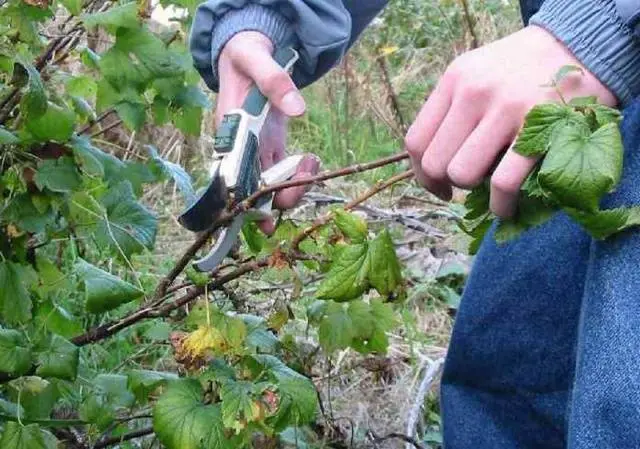
Choose about 6 young shoots of the current year, they should be the strongest, healthiest and well located. They are left. The rest of the growth is cut out. If you follow such a pruning plan annually, then there will be a currant bush of 15 shoots, of different ages (1, 2, 3 years), but which are the most productive.
Next, shorten the length of the branches. In the old, the tops are cut off, which usually dry out, in the young, no more than 6 buds are left. It is better to burn all trimmed material, so you prevent the spread of potential infection and pests. After pruning, protective measures are taken to process currants.
Protection against pests and diseases
How to process currants in the fall to prevent the development of diseases and pests? After harvesting, it is recommended, as a preventive measure, to spray with Bordeaux liquid both the currant bush itself, and the soil around it, and the aisle.
For beginner gardeners, we recall that Bordeaux liquid is prepared from 100 g of copper sulfate and 100 g of lime, which are dissolved in a bucket of water, a rich turquoise liquid is obtained. Bordeaux liquid fights fungal infections well, it can be used to treat places of cuts and cuts on the bush. The tool has long been known to gardeners, is widely used, as it is quite effective. Treat blackcurrant at least 2 times weekly.

Another substance that acts against fungi and their spores, insects and larvae is a concentrated solution of carbamide (urea). For spraying blackcurrant, take at least 300 g of urea dissolved in a bucket of water (10 l). The entire bush is abundantly sprayed with the prepared solution.
Some gardeners recommend not to wait for autumn leaf fall in currants. And remove the leaves yourself at the first sign of their wilting and yellowing. So the plant will be focused on preparing for winter, all the nutrients will be sent to the branches and buds of the currant bush.
Collecting fallen leaves, cleaning litter and dry branches from the soil is a must. Usually pests and spores of bacteria and fungi overwinter in rotting plant debris. The collected waste is best incinerated.
And the soil under the currant bushes is loosened and treated with a light pink solution of potassium permanganate, Bordeaux liquid (100 g / 10 l of water) or a solution of copper sulfate (50 g / 10 l of water).
Loosening around the base of the bush is carried out to a shallow depth of about 5 cm under the crown, deepening by 15 cm, and digging between the rows to a depth of 20-30 cm. After loosening, the soil and the bush are treated with “Karbofos” according to the instructions or boric acid.
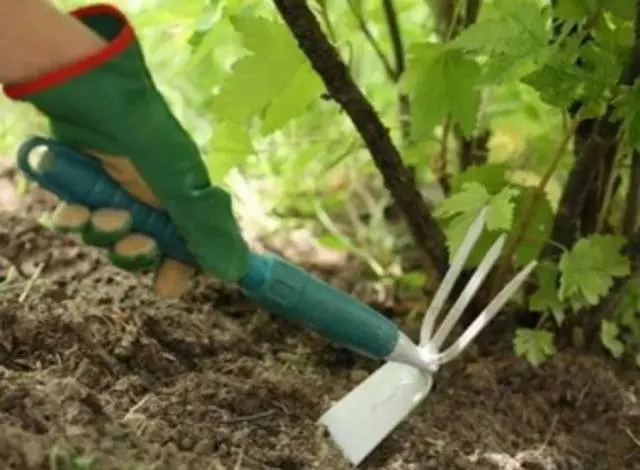
A few rules, the observance of which will lead to success in the fight against insects and diseases:
- Choose disease-resistant currant varieties for future planting;
- In the event of the first signs of the disease, do not be afraid to use insecticidal and fungicidal preparations, i.e. those aimed at protecting plants from insects and diseases;
- For spraying to be effective, carry it out only in dry weather, when rain is not expected. It is impossible to process currant bushes immediately after rain or after dew.
Preventive measures will protect currant bushes from such serious diseases and pests as:
- Antraknoz – looks at first like reddish spots on the leaves that appear in summer. Then they become larger and affect the entire leaf, it dries and falls off. Spores are stored in plant debris under the bush in winter. In autumn, fallen leaves must be collected and burned;
- Mučnistaâ rosa – its appearance is indicated by a white coating on the leaves and berries of currants in the middle of summer. The disease affects, first of all, weakened bushes. It is important to prevent weakening of plants by feeding them regularly;

- Rust – manifests itself in the appearance of convex growths of orange color or as dots, also orange. Bordeaux liquid or “Fitosporin” will help;
- Defeat currant glass case – butterfly, which lays eggs in currant bark. Caterpillars emerge from the eggs, which make moves in the middle of the shoots, causing them to dry out. Means of struggle – “Karbofos”.
- aphid – the leaves turn red, then darken and fall off. Karbafos fights well with aphids. Autumn treatment with the drug will prevent the appearance of aphids in the summer;
- Firefly – butterfly, whose pupae overwinter in the soil under the bush. It is necessary to loosen the soil around the bush. Fireflies lay their eggs in currant flowers, causing their death.
It is much easier to take simple preventive measures than, without doing this, to treat diseases that can end very sadly: the complete removal of the diseased bush.
Conclusion
Preventive measures aimed at protecting currants from possible diseases and pests are important agricultural practices, as they are aimed at shaping the future crop. Pay due attention to the autumn feeding of currants, which makes it possible to form strong immunity, the plant will enter the winter prepared and easily endure it. Do not forget about pruning the currant bush. It is important to rejuvenate the bush and have shoots that will give the highest possible yield.










